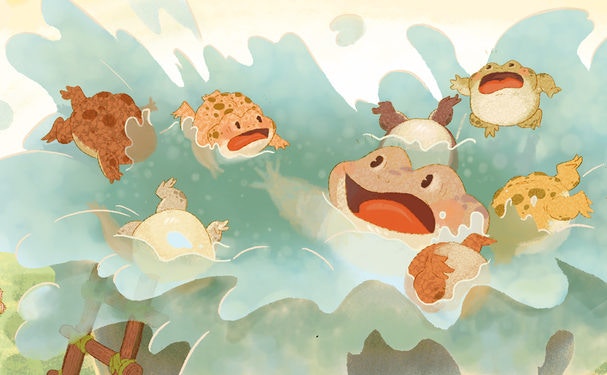Watch a group of preschoolers working in a garden. It's cute, right? But it turns out they're learning more than you'd think. According to our new NSF-funded report, STEM Starts Early, co-published by the Joan Ganz Cooney Center at Sesame Workshop and New America, there's growing evidence that very young children from all backgrounds -- even children from birth to age 8 -- learn important science, technology, engineering, and math (STEM) skills and habits of mind from everyday play and early learning activities. For example, by growing their own fruits and vegetables or even building forts and stacking blocks, children collect data, begin to develop strategies, solve problems, and learn to adjust their approach when things do not go as expected. These activities, when facilitated well, aren't only laying a foundation for future STEM learning; they're allowing kids to actually be scientists, here and now. Who knew that such young kids were capable of this kind of scientific inquiry? There are lots of common misconceptions about how young children engage in STEM learning -- and that's important, because adults' attitudes about STEM learning profoundly influence children's own beliefs about STEM learning, as well as their abilities. Take a look at these four facts everyone should know about early STEM learning and consider what you can do about them.
STEM benefits all children, regardless of their innate abilities or backgrounds.
What the research says
It's a common myth that STEM is only for certain kinds of kids -- those who are naturally gifted or driven in STEM subjects. But in fact, the research shows that STEM is important for all children and for all subject areas. Think of it this way: As we learn new skills, our brains weave skill strands into ropes we can use to solve problems, meet challenges, and, in turn, acquire new skills. STEM skills are vital in many kinds of skill ropes: When kids have opportunities to collect evidence and solve scientific problems, they build strong ropes that can be used in many ways, both now and later in life. Take, for example, the profound ties between STEM and language learning: Early STEM instruction results in higher language and literacy outcomes, and the reverse is true as well. For example, exposure to more spatial language during block play in infancy and early childhood increases children's spatial abilities when they're older. Furthermore, math skills and reading skills at kindergarten entry are equally predictive of reading skills in the eighth grade; and background knowledge about the world and how it works (much of which falls within the realm of STEM concepts) is critical for reading comprehension once children are able to sound out the words they encounter.
What you can do
If, like many teachers, you find yourself wondering where you could possibly find time to add a STEM block to your full schedule, you can breathe a sigh of relief. Remember that you can weave STEM into almost anything you're already doing. There are curricula available for this -- for example, research has shown that using the IDEAS model, an integrated science-and-literacy instruction block, leads to better reading and science scores (and more positive attitudes about both) than using traditional, separate literacy and science blocks. If you don't see yourself or your school adopting new teaching models or curricula anytime soon, consider how you can casually weave STEM into everyday situations in the classroom. For example, let's say a child is trying to get something she can't reach. Instead of reaching it yourself and handing it to the child, talk her through a problem-solving scenario: "Hmmm, let's stop and think about why you might not be able to reach it. Oh, you're not tall enough? What can we do to make you taller?" Support the child as she works through the problem herself, encouraging her as she communicates and tries some different solutions and offering suggestions if she becomes frustrated. In these simple ways, you can foster independence, critical thinking, STEM and oral language development, and more.



